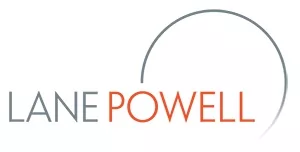As demonstrated by the second quarter gross domestic product (GDP) numbers and the unemployment rate, the COVID-19 pandemic is having a devastating impact on the United States economy. Leaving aside suburban and exurban residential properties that may benefit from increased remote working and people seeking to leave urban residences, the pandemic presumably also will result in significant decreases in real property values, especially for commercial properties and rental residential properties.
This article focuses on Oregon properties for which COVID-19 has had a detrimental impact on value. Generally, such an impact on value can result in an Oregon property tax reduction from:
- A reduction in the assessed value ("AV") of property for the current 2020-21 property tax, 1 based on the value as of the assessment date for the 2020-21 property tax year.
- A mid-year reduction in property tax for the 2020-21 property tax year.
- A reduction in the AV of property for the 2021-22 property tax year, based on the value of the property as of the assessment date for the 2021-22 property tax year.
However, for the reasons described below, owners may not obtain a significant Oregon property tax savings or reduction.
Reduction in AV for the Current 2020-21 Property Tax Year
For Oregon property, AV generally equals the lesser of its real market value ("RMV") or its maximum assessed value ("MAV"). 2 The RMV generally equals the fair market value of the property-the price at which a willing buyer and a willing seller would agree in an arm's-length transaction, neither being under a compulsion to buy or sell. 3 RMV is measured each year as of January 1 at 1:00 a.m. 4 The concept of MAV and its impact is discussed later in this article in the section addressing the 2021-22 property tax year. With respect to the 2020-21 property tax year, the COVID-19 pandemic could impact Oregon property taxes only if it reduces the RMV of property as of January 1, 2020
Taxpayers generally have until December 31, 2020 to file a protest contesting the RMV determined as of January 1, 2020. 5 However, although hindsight generally is 20-20, it appears unlikely that a property owner could argue that the COVID-19 pandemic affected property values on January 1, 2020. COVID-19 existed before January 1, 2020-the "19" in COVID-19 refers to the fact that the virus arose in 2019. 6 Nonetheless, the World Health Organization did not issue its first guidance about the virus until January 10, 2020. 7 Further, the scope of the health and economic impact of COVID-19 was not known until later. For example, President Trump did not declare the COVID-19 pandemic a nationwide emergency until March 13, 2020. 8 Given this timing, it generally appears that property owners could not successfully argue that the COVID-19 pandemic impacted the arm's-length purchase price for property as of January 1, 2020.
Mid-Year Change in Property Tax Liability
Oregon law contains provisions that allow for mid-year property tax relief if "any real or personal property is destroyed or damaged by fire or act of God." 9 For these purposes, "'Destroyed or Damaged' means that the real or personal property is physically degraded by a qualifying fire or Act of God event." 10 Although a reduction in value generally indicates that the property was "degraded," 11 it is unclear if it is physically degraded. After all, the COVID-19 pandemic has no effect on the appearance or structural soundness of property, in contrast to property impacted by a fire, flood, or mudslide. 12
The requirement of a physical degradation in the Oregon administrative rules differs from mid-year relief provisions in other states. For example, a similar provision in California defines damage to include "a diminution in the value of property as a result of restricted access to the property where that restricted access was caused by the major misfortune or calamity." 13 The Louisiana corollary goes beyond destroyed or damaged to also include "non-operational, or uninhabitable." 14 These provisions in other states arguably indicate a decision by the Oregon legislature to provide more limited relief with respect to mid-year changes in value.
Reduction in AV for the 2021-22 Property Tax Year
The potential impact of the reduction in RMV caused by the COVID-19 pandemic for the 2021-22 property tax year requires an understanding of Oregon's unique, constitutionally mandated property tax limitations: Measure 50 and Measure 5.
Measure 50: Maximum assessed value of property.
In 1997, Oregon voters approved Measure 50, codified at Article XI, § 11 of the Oregon Constitution. Measure 50 created the above-described formula pursuant to which the AV of Oregon property equals the lesser of its RMV (defined above) and its MAV. The initial MAV for property for the 1997 property tax year equaled 90 percent of the property's 1995 RMV. 15 Thereafter, a property's MAV cannot increase by more than three percent from the prior year. 16
Because the RMV of commercial and residential property generally has increased more than three percent each year, Measure 50 generally has resulted in the AV of property being less than its RMV. Further, Measure 50 includes a mechanism pursuant to which new property, including new additions to existing property, has a MAV with this discount (or adds a discounted amount to the MAV of existing property). Generally, the MAV for new property (or the MAV increase resulting from the addition of new property to existing property) equals the product of the RMV of the new property and a "ratio, not greater than 1.00, of the average maximum assessed value over the average real market value for the assessment year." 17 This ratio, generally referred to as the "changed property ratio," is determined by each county and is separately calculated for different property classifications, such as residential, commercial and industrial. For the 2020-21 property tax year, the changed property ratios for Multnomah County (the county in which Portland is located) for residential property and commercial property are 50.1 percent and 40.8 percent, respectively. 18 In other words, on average, residential property was assessed at 50.1 percent of its RMV, and commercial property was assessed at 40.8 percent of its RMV. The 2019-20 changed property ratios for neighboring Washington County for residential property and commercial property were 61.6 percent and 65.3 percent, respectively. 19
Accordingly, a reduction in RMV, in and of itself, is not sufficient to result in a reduction in AV. Instead, the reduction would have to be significant enough to cause the RMV to drop below MAV. Based on the changed property ratios, this could require a reduction in RMV of 50 percent or more. The reduction in value from the pandemic generally should reduce the spread between RMV and MAV, but may not be enough to cause a reduction in AV. 20
Measure 5: Cap on property tax for general government and education purposes.
In 1990, Oregon voters approved Measure 5, codified at Article XI, section 11b of the Oregon Constitution. Pursuant to Measure 5, the combined taxes of education taxing districts cannot exceed 0.5 percent of a property's RMV, and the combined taxes of other government taxing districts cannot exceed 1.0 percent of a property's RMV. 21
Measure 50 has largely mooted the impact of Measure 5, given its rules for determining AV and the discount of AV to MAV. For example, assume that the other government rates applicable to property totaled 1.3 percent and a property had an RMV of $1 million and a MAV of $700,000. The AV would be $700,000 and the other government taxes would be $9,100 ($700,000 * 0.013). This tax is below the Measure 5 limit of $10,000 (1 percent of $1,000,000). However, if the RMV of property suffered a sufficient reduction, the product of the nominal rate and the AV could exceed the Measure 5 limit. Using the example above, if the RMV instead were $800,000, the AV would remain $700,000. However, the Measure 5 limit would drop to $8,000 (1 percent of $800,000). In this situation, the assessor would reduce the rates imposed by the other government tax districts proportionally so that the total other government taxes equaled $8,000. The term used for this is "compression." 22
The reduction in RMV resulting from the COVID-19 pandemic could result in compression benefits for property owners.
Footnotes
1 The Oregon property tax year is July 1 to June 30. Or. Rev. Stat. § 308.007(1)(c).
2 Or. Rev. Stat. §308.146(2).
3 Or. Rev. Stat. §308.205(1).
4 Or. Rev. Stat. §308.210(1).
5 Or. Rev. Stat. § 309.100. However, special rules apply to certain property. See, e.g., Or. Rev. Stat. § 308.584(2) (generally requiring owner of centrally assessed property to request a conference on reduction in valuation by June 15).
6 See World Health Organization, "Rolling updates on coronavirus disease (COVID-19)" (available at https://www.who.int/emergencies/diseases/novel-coronavirus-2019/events-as-they-happen) ("At the close of 2019, the WHO China Country Office was informed of a pneumonia of unknown cause, detected in the city of Wuhan in Hubei province, China.").
7 Id.
8 Federal Emergency Management Agency, "COVID-19 Disaster Declarations" (available at https://www.fema.gov/disasters/coronavirus/disaster-declarations).
9 Or. Rev. Stat. §308.425 (allowing for proration and reduction of taxes); see also Or. Rev. Stat. §308.146(5) (allowing for reduction of MAV "when a portion of property is destroyed or damaged due to fire or act of God.").
10 OAR 150-308-0510.
11 See Webster's Third New International Dictionary (unabridged ed. 2002) at 594 (generally defining "degrade" by reference to a reduction in status or level.)
12 A property owner could assert that COVID-19 physically degrades the air inside and surrounding the property. The example in OAR 150-308-0510, however, may undermine this: "Example: A landslide caused by an Act of God occurs in a subdivision. Some properties in the subdivision are physically damaged or destroyed by the landslide. Other properties in the subdivision are not physically affected by the slide, but may have a degraded market value due to the market attaching a stigma to the subdivision. Only those properties in the subdivision, which were physically degraded by the slide, are 'damaged or destroyed' and eligible for a proration of tax under ORS 308.425." (Emphasis added.)
13 Cal. Rev. & Tax Code § 170(a)(1). On June 9, 2020, the California State Board of Equalization voted 3-2 to not issue guidance on the application of this definition to the COVID-19 pandemic. See 2020 MINUTES OF THE STATE BOARD OF EQUALIZATION, Tuesday, June 9, 2020 (available at https://www.boe.ca.gov/meetings/pdf/2020/060920M.pdf).
14 La. Rev. Stat. § 47.1978.1(A)(1).
15 Or Const, Art XI, § 11(1)(a).
16 Or Const, Art XI, § 11(1)(a); see also Or. Rev. Stat. §308.146(1) (MAV "equals 103 percent of the property's assessed value from the prior year or 100 percent of the property's maximum assessed value from the prior year, whichever is greater.").
17 Or. Rev. Stat. § 308.153(1)(b). For example, if the ratio were 60 percent, new property with an RMV of $100,000 would have a MAV of, or increase the MAV of existing property by, $60,000.
18 See Department of County Management, Changed Property Ratio by Property Class (available at https://multco.us/file/54813/download). Higher percentages apply for property in the cities of Fairview, Gresham, Troutdale and Wood Village.
19 See Washington County - History Changed Property Ratio (CPR) (available at https://www.co.washington.or.us/AssessmentTaxation/upload/2019-CPR-for-Web.pdf.
20 Somewhat ironically, the COVID-19 pandemic could harm property owners with respect to new property. Presumably, the changed property ratios will increase in the 2021-22 property tax year. This means that new property with the same RMV will have a higher MAV.
21 Or Const, Art XI, § 11b.
22 Sherman v. Multnomah County Assessor, TC-MD 030294F, WL 21282876 (Or Tax M Div, May 22, 2003).
The content of this article is intended to provide a general guide to the subject matter. Specialist advice should be sought about your specific circumstances.

